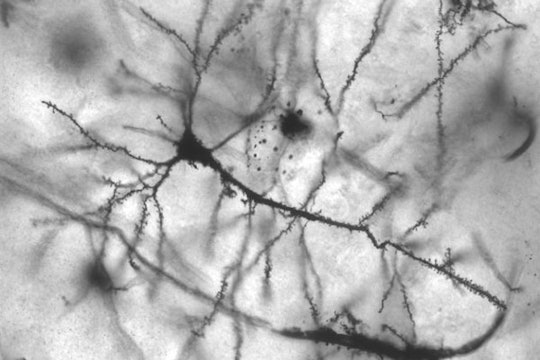
Image by MethoxyRoxy, reproduced under CC BY-SA 2.5
Neurons die with grace
Neuroscientist Emily Lowry’s ongoing research on how and why nerve cells die has implications for Alzheimer’s, ALS and beyond.
Emily Lowry, a postdoctoral researcher in the Wichterle Lab at Columbia University, sat down to discuss her research on neurodegeneration with us as part of our audio series, Condensed Matters.
In the lab, Lowry uses in-vitro models of human ALS (Amyotrophic Lateral Sclerosis) to try to find drugs that might stop cell death for a variety of neurodegenerative diseases like Parkinson’s disease and ALS, as well as in cases of stroke. She has learned some surprising and paradoxical things about the pathways and signals that lead to a neuron’s orderly death, and hopes to untangle the complicated progression of the related cell death pathways that are shared by many neurodegenerative diseases.
“Neurons have the rare attribute that they don’t divide anymore. Once a cell has become a neuron, that’s it, it’s not going to make any offspring…it’s there, it’s specialized, and once it dies it’s gone. And in most cases, there isn’t going to be anything there to replace it.”
She attempted to explain to us why a neuron’s death is actually an important, adaptive mechanism in the brain. Listen:
“The signals that tell dividing cells to divide and keep going and live are also the signals that tell neurons to die. So some of the drugs that we found to be effective in saving motor neurons actually kill other cells.”
